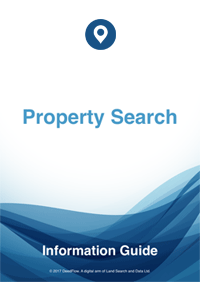Wording of Restrictive Covenants
Contents
Overview
Your ownership documents, whilst describing every other aspect of your property, do not describe your property boundaries, save in a general way. This means that your documents are not likely to include measurements, dimensions, T or H marks or other boundary markers, and are not very useful save where a boundary dispute involves a larger general area of your property; on the contrary, boundary disputes invariably relate to small or narrow parcels of land. Accordingly, although expressly stated boundary positions are rare, an attempt can and should be made to see if your ownership documents imply the position of your property boundaries.
Where to Look for Implied Boundary Positions
These are the main documents from which boundary positions may be implied:
- Title Register
- Title Plan
- Associated Documents
- Deed Plans
- Lease
- Lease Plans
These documents for each of the involved properties, should be examined. Leases and Lease Plans are generally very helpful, but only where the properties have a leasehold tenure. All of these documents, where applicable are contained in the Boundary Search, together with a useful guide booklet).
Title Register
Example 1 (Wording of a Restrictive Covenant)
A restrictive covenant may state who is responsible for erecting and maintaining a boundary fence. This is an example of such a covenant found in a Schedule of Restrictive Covenants at the end of the C section of the Title Register.
(3) The following are details of the covenants contained in the Transfer dated 28 March 1948 referred to in the Charges Register:
"The Purchaser hereby covenants with the Vendor
(1) That he the purchaser will within two months after the date of the contract erect a close boarded fence not less than five feet six inches in height along the south western boundary marked with a "T" on the plan annexed hereto."
Example 2 (Declaration in the Title Register)
A Declaration appearing in Section A of the Title Register reads:
".... It is further declared that the walls and fences dividing the said properties shall henceforth be deemed to be party walls and fences and shall be maintained and repaired accordingly."
A party wall is one which is owned and maintained equally by the respective neighbours.
Example 3 (Statement and Covenant in Title Register)
Two further examples from a Title Register, found in the Schedule of Restrictive Covenants contained in the C section of the Register read:
"2 A building line from the road boundary shall be observed as marked on the plan."
"6 FENCES. Each purchaser shall within three months after being called upon by the vendors so to do erect and for ever afterwards maintain boundary fences between the lot or group of lots purchased by him where marked with a T within the boundary line between the building line and road boundary to be not more than four feet high."
The above examples show that boundary positions are often alluded to in the wording of Restrictive Covenants, Declarations and Statements in the Title Register (and Title Plan), which means that their positions can be reasonably implied with a degree of accuracy.
Boundary Search 2 Properties
Obtain all the available property documents held to help resolve common boundary problems. For 2 Adjoining Properties.
£99.95Boundary Search 3 Properties
Obtain all the available property documents held to help resolve common boundary problems. For 3 Adjoining Properties.
£146.95Boundary Search 4 Properties
Obtain all the available property documents held to help resolve common boundary problems. For 4 Adjoining Properties.
£193.95


